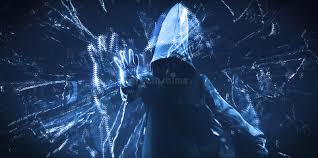
The dark web remains one of the most enigmatic parts of the internet—cloaked in secrecy, accessible only through specialized browsers like Tor, and widely associated with criminal activity. Yet beneath the myths and media dramatizations lies a complicated and revealing reality. Platforms like DarkWebMarket, which act as directories of active darknet marketplaces, offer more than a guide to illicit goods—they provide a unique lens into global behavior, technology trends, and societal gaps. By simply browsing DarkWebMarket, we uncover valuable insights into how people navigate freedom, risk, and trust in the digital age.
The Marketplace as a Mirror
DarkWebMarket curates links to various .onion sites, many of which host online markets for drugs, data, counterfeit goods, and hacking services. What these listings reveal, however, is not just criminal demand—but global stress points. Surges in demand for fake IDs, stolen credit cards, or malware tools often coincide with real-world economic hardship, war, or political instability.
This market behavior mirrors the visible world. For example, when inflation hits or employment opportunities shrink, we see a rise in digital fraud services or cryptocurrency scams. When governments tighten surveillance, anonymous communication tools and privacy-enhancing technologies gain popularity. Browsing DarkWebMarket is like peering into the undercurrent of what people fear, need, or exploit—unfiltered and unregulated.
An Economy of Anonymity
Transactions in darknet marketplaces are driven by a deep need for privacy, with cryptocurrencies like Monero taking precedence over Bitcoin due to enhanced anonymity. Buyers and sellers operate behind layers of pseudonyms, yet they depend on reputation systems, escrow services, and community reviews to build trust. The parallels to legitimate e-commerce platforms are undeniable.
What stands out is how even in spaces built to avoid detection, people still seek reliability, fairness, and consistency. This contradiction—illegality thriving on principles of order—underscores a deeper truth about human behavior: anonymity may protect identity, but trust remains essential for interaction.
Innovation from the Edge
Ironically, many technological innovations tested on the dark web often find their way into the mainstream. Encrypted messaging, multi-signature wallets, decentralized hosting, and privacy coins were all normalized in dark markets before wider adoption. DarkWebMarket, by cataloging such platforms, inadvertently becomes a record of emerging digital trends—some of which challenge surveillance norms and redefine what secure communication looks like.
This suggests that the dark web isn’t just a space for criminal commerce, but also a sandbox for digital innovation, where tools of resistance, privacy, and autonomy are developed far from corporate control.
Ethics, Curiosity, and Responsibility
Browsing DarkWebMarket inevitably raises questions: is simply viewing these platforms unethical? Where does curiosity end and complicity begin? For cybersecurity researchers, journalists, and policy analysts, such directories are critical for understanding threats and informing public safety. For casual users, the line is blurrier.
But one thing is clear—intent matters. Browsing to learn, study, or monitor isn’t the same as engaging in illegal transactions. Still, these platforms serve as a reminder that digital tools are neutral—it’s the way they are used that determines their value or danger.
Conclusion
DarkWebMarket offers a map—not just to hidden services, but to hidden truths. It exposes the stress fractures in our social systems, the persistence of trust even in lawless environments, and the human desire for privacy in an age of surveillance. While it occupies a dark corner of the internet, it reflects back the world we live in—with all its contradictions, innovations, and risks. To browse it is not to condone it, but to better understand the realities many choose—or are forced—to navigate.
